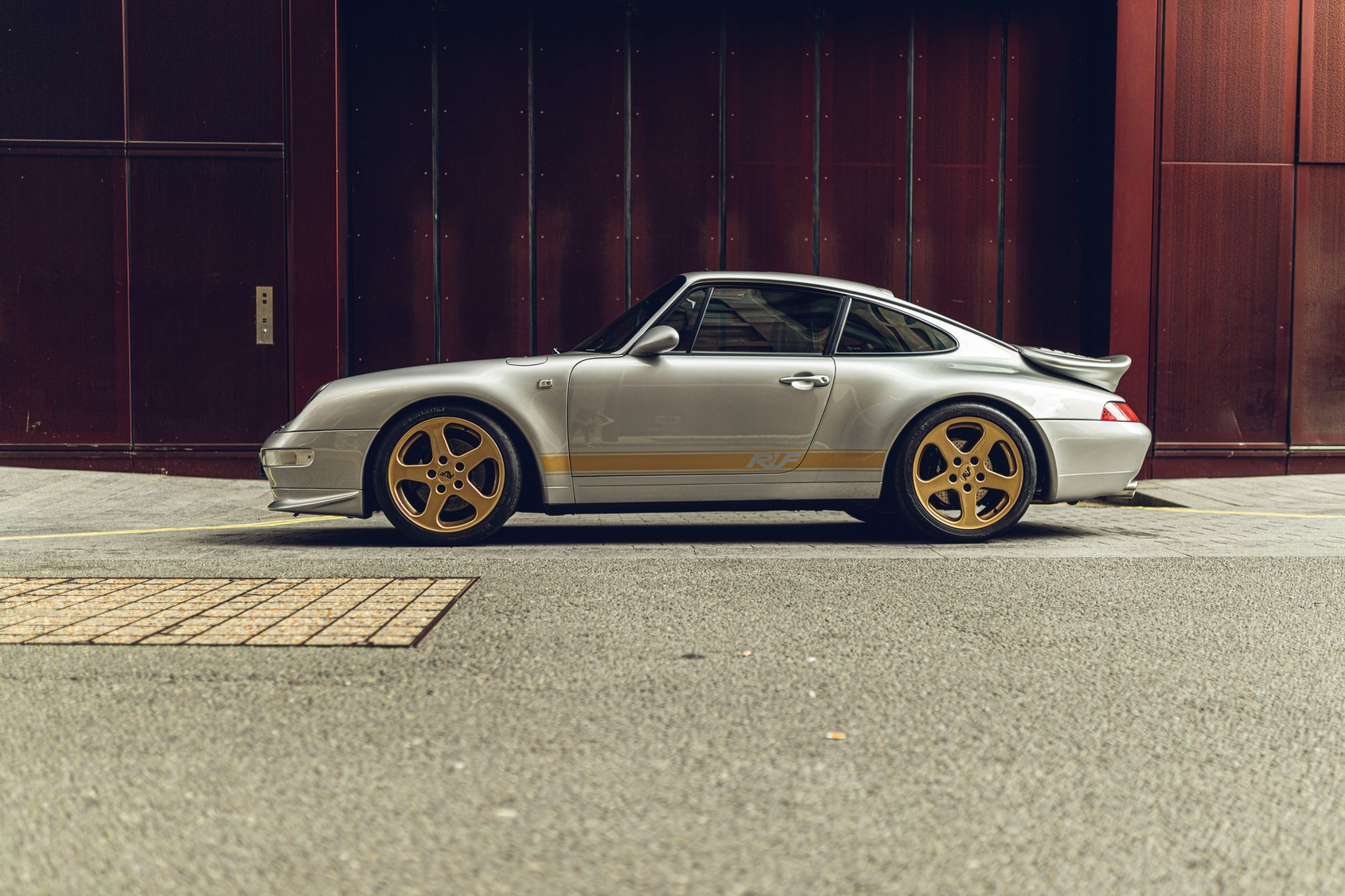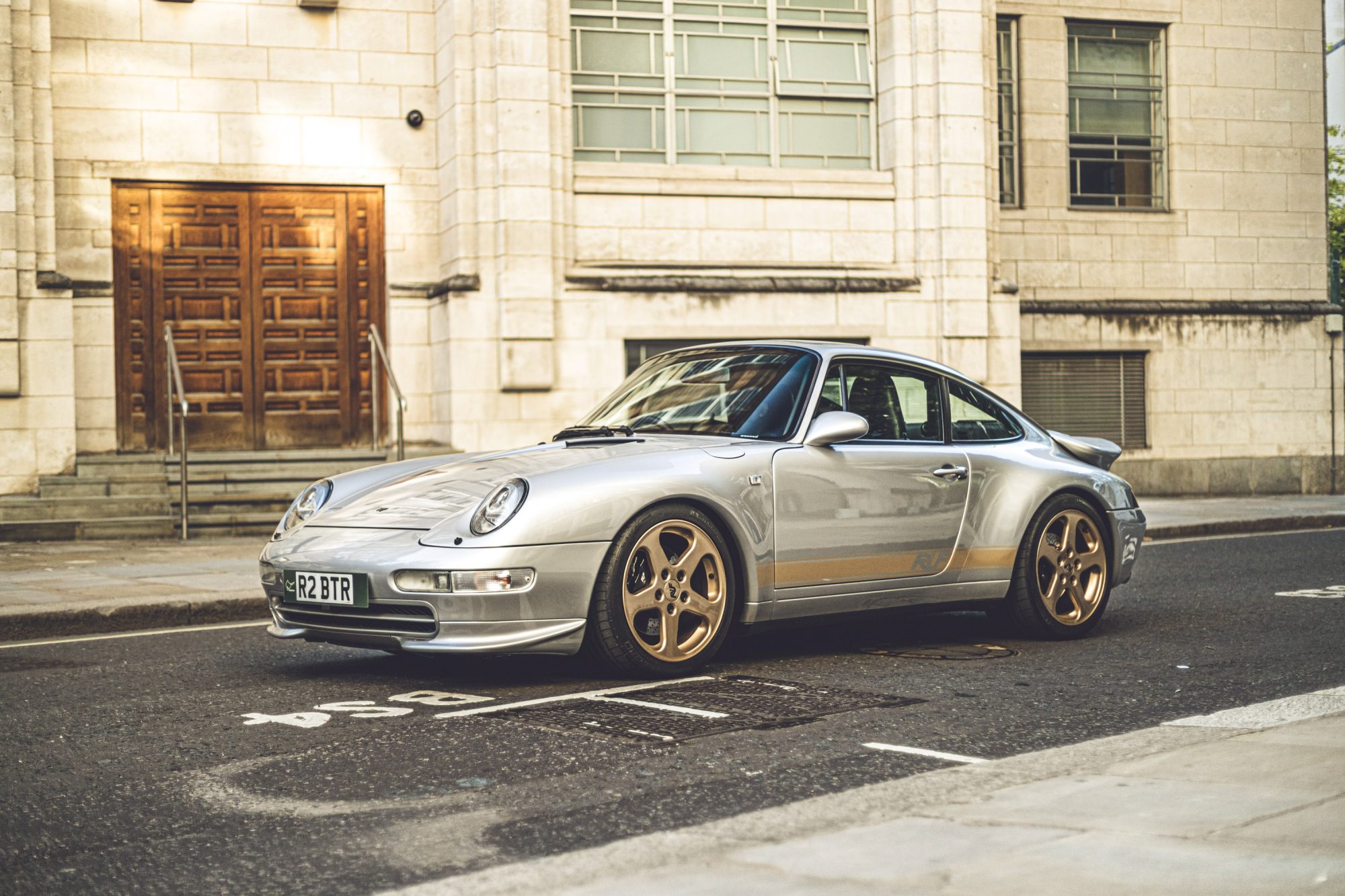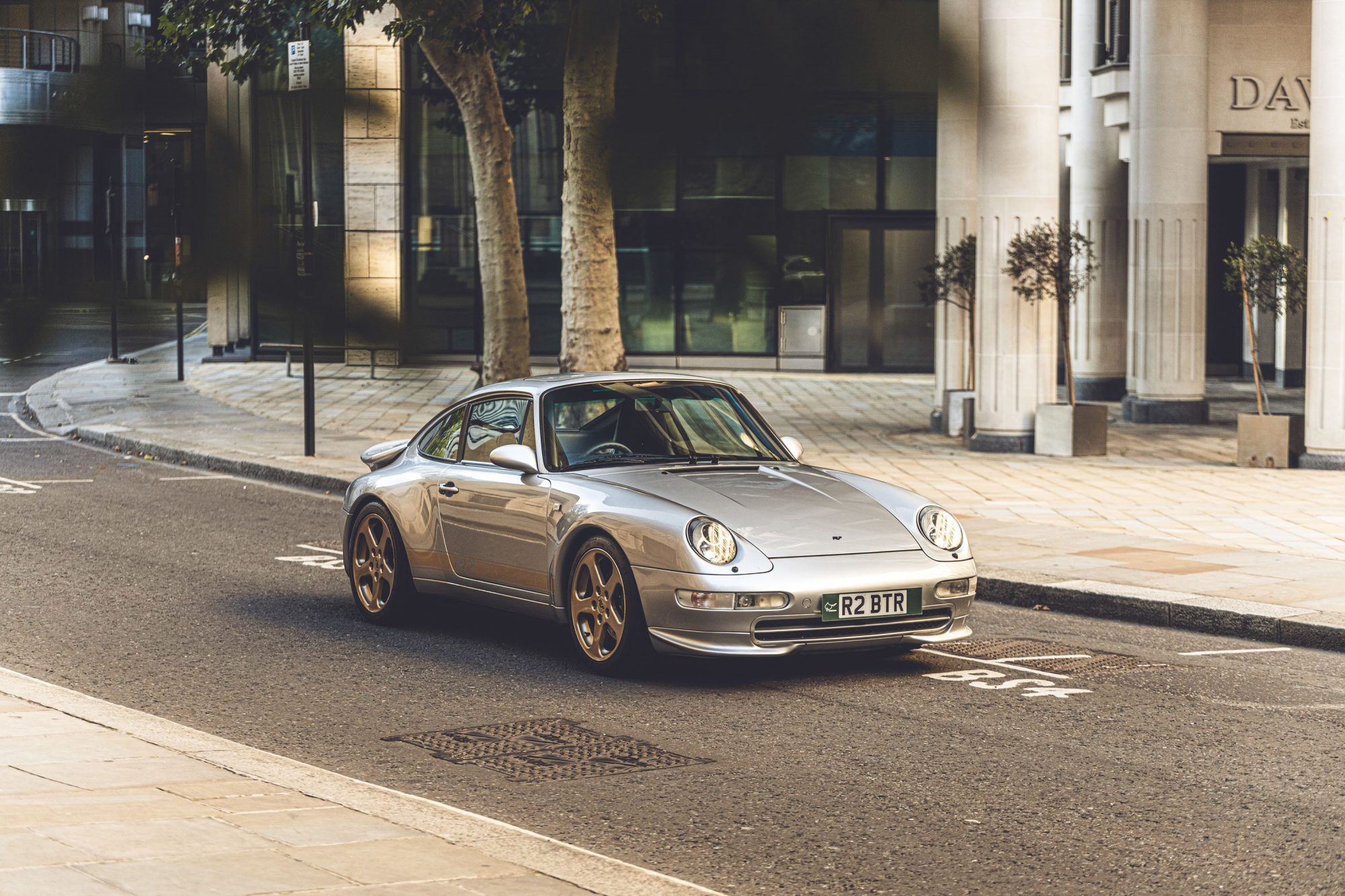

The RUF BTR2 Mixes Mature Styling With Potent German Engineering
Photography by Virgiliu Andone
The first thing that struck me when I saw this exceptional machine in the metal was the understated elegance of its appearance. It certainly does look like a fast Porsche, but its mature stature belies the fact that this is no ordinary product of Stuttgart. In fact its manufacturer is not even listed as Porsche in the paperwork. This is a different breed of air-cooled performance, and it comes from a quiet Bavarian municipality called Pfaffenhausen.
One can instantly recognize the lines of a 911 in nearly every RUF automobile, but in these cars the balance between the show and the go elements is what you could almost classify as “sleeper.” It looks very similar to a 993-generation Porsche Turbo—and there’s no argument to be made for a shape like that to ever completely fly under the radar—but relative to what this RUF is capable of, its aesthetic presence is a bit coy even with the bronze wheels and graphics.



Specialist manufacturers that produce fast, low-volume cars often adopt an attention-grabbing styling strategy; simply put, they want to stand out from the typically more reserved designs of larger manufacturers. This usually results in maw-like intakes, taller wings, and just more attitude in general at the expense of subtlety. RUF on the other hand has long been content with a more delicate touch to the exterior. RUF cars are not what any sane person would describe as demure—and we are speaking in relative terms by default whenever turbocharged sports cars capable of 190mph is the topic—but they never overdo it. What this means is that in tandem with the incredible power that Alois Ruf and his compatriots bestow below the engine cover, a RUF product always has the horsepower to back up the bark.
In the late 1970s, Alois Ruf turned his father’s respectable automotive repair shop into one of the most charismatic specialist manufacturers of the Porsche world, and since then the company has maintained a consistent track record of world-beaters. What sets RUF apart is not just the reality-bending speed of creations like the CTR “Yellowbird,” but also the philosophy that yields these legendary cars.







They are always on a quest to achieve the full potential that can be unlocked from a standard Porsche (and have gone well and truly beyond that in many cases), by taking the engineering to levels of refinement and potency that the factory never did. Though RUF is its own bonafide manufacturer—not a tuner—the plan has never seemed to be about wholly overwriting the Porsche DNA, but rather about second-guessing what the engineers might have been forced to reluctantly give up on during the production process due to one constraint or another. RUF doesn’t have to deal with the same issues as a massive operation like Porsche, and therefore the company has the freedom to go one, two, three, or however many steps further it feels like.
And these cars are not just Porsches with more power. There is a thoroughness to these cars, a comprehensive approach to improvement wherein the mighty motors are matched in kind by bigger brakes, a strengthened chassis, more efficient aerodynamics and cooling, and of course a gamut of suspension work. These are not engine-swap hot rod Porsches, these are RUFs.




While the aforementioned original CTR gets most of the love, the BTR range is no joke either, and predates the CTR as a trouncer of supercars. Production of the first G-series-based BTRs began in 1983, and were the first cars to carry a RUF VIN. In the same convention later followed by the CTR, the BTR name is an abbreviation of Gruppe B Turbo RUF, which essentially references the Group B set of sports and rally cars regulations that had been introduced in 1982. But since Group B sports car racing never really took off, the BTR proved to outlive its inspiration very early on into its lifespan. Group B is synonymous with rallying now, but at the beginning there were high hopes for a big manufacturer presence in circuit competition as well—that’s where the Ferrari GTO Evo and Porsche 959 would have potentially had their motorsport showdown.
But lets get back to the BTR. The first generation claimed for a time the title of world’s fastest production car, and some even say that this car was part of the inspiration for Porsche to take on the 959 project. I’m not sure how valid those claims are, but I wouldn’t be at all surprised if the BTR played some part in influencing Porsche’s monumental supercar project. In many ways, a RUF can be regarded as the engineer’s Porsche; a way to extend and amplify the genetics of the 911 and its mid-engine relatives.






The BTR name was absent during the 964 generation 911s, but the followup act, the BTR2 like the car pictured here, took the original concept and successfully applied it to the 993 generation. By this time, the place of the BTR in the RUF lineup had changed, becoming a more street-faring car if you will. Something to cater to the customers who were in search of usable performance, rather than outright bragging rights and speed records.
Since RUF also converts customer cars from base 911s (as opposed to starting from a blank, unstamped shell directly from Porsche, which is how fully in-house RUFs begin their lives), only 10 BTR2s have RUF VINs stamped on them. Out of those 10, only three were righthand drive. As you can guess, the example pictured here is one of those precious few. The rest of the BTR2s are conversions, meaning they started live as a standard Porsche 993, before being modified by RUF at the request of their owners.
Every owner of a converted car could opt for either the complete BTR2 package, or just the bits he or she liked. For instance, very few of these converted car owners went for the integrated roll cage, as installation required taking out the whole interior of the car. In essence, the 10 “VIN cars” are the ones that deliver the purest vision of the RUF BTR2.





To go back to the point about relative sleepers, while Porsche decided to use its traditional wide body styling for the 993 Turbo, RUF stuck with the narrow body, and culled more power from its version of the turbocharged flat-six. The Porsche Turbo is also AWD, with twin turbos, while the BTR2 is a more traditional—and more enjoyable—rear-wheel drive setup with a single turbocharger. It’s got more power, more torque, less weight, and is faster in every part of a straight line than its Porsche doppelgänger, and it also predates the factory Turbo by some two years—perhaps this explains the decision for the narrower body?




Regardless of the width of its rear track, the BTR2 still holds its own with modern sports cars. This is no charming analog sports car whose performance gets the rose-tinted treatment of nostalgia. It’s simply fast. Modern fast. The engine, based on the 3.6L flat-six from the 993 Carrera, delivers nearly 420hp and 435lb-ft right around the 5000rpm mark, and it transmits it through a RUF six-speed manual and a 60-percent locking differential. Handling is also dramatically assisted by an integrated roll cage, making for a driver experience that transcends the power numbers on their own. But those numbers are far from shabby on their own. The good old 0-to-60 takes just 3.7 seconds, and to prove that it’s not just a trick of short gear ratios, the BTR2 can carry on to a top speed of 191mph. As I said, this is still a modern definition of fast.
The first owner kept this car for about 20 years, and he had all the maintenance and servicing done by RUF. He enjoyed the car by all accounts, driving it for some 70k miles. Always detailed, never taken to a carwash, the original paint as applied by RUF in 1998 still looks incredible. I don’t really understand the logic that says every sports car needs to be driven rather than treated as an investment or as garage art, but this BTR2 proves that if you take correct care of your frequent drivers their condition won’t be dictated by the odometer.











